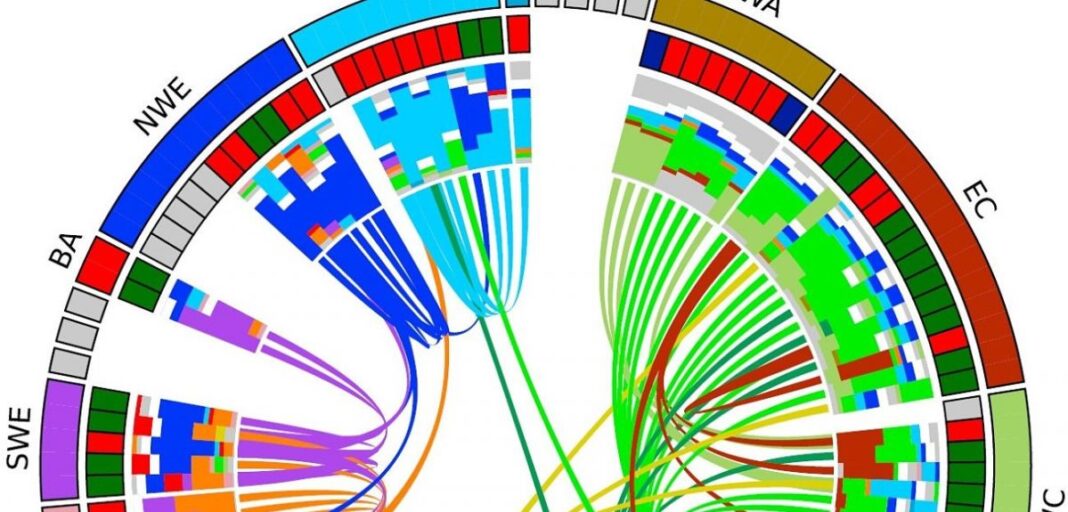Modern Europeans owe their blue eyes to hunter-gatherers, their height to Asian nomads and their blond hair to Anatolian Neolithic farmers, Maylonline reported.
Estonian and Italian researchers have looked at how ancient human crossbreeding has helped shape our bodies today, including which historical groups have contributed to higher or lower heart rate, cholesterol and body mass index.
Most of Europe’s modern genetic makeup has been shaped by movements over the past 10,000 years, when local hunter-gatherers mingled with arriving Anatolian farmers from present-day Turkey and Asian nomads or Pontic steppe shepherds. The latter originate from some lands of modern Bulgaria, Romania, Moldova, Ukraine, Russia and Kazakhstan.
European hunter-gatherers, Anatolian farmers, steppe shepherds and ancient Siberian populations have been divided for thousands of years and evolving in different directions. But when they finally got together, their genome came in contact, and the genetic variants that characterize each of them mingled. This found a study led by scientists from the University of Tartu, Estonia and the Universities of Turin and Padua.
Black hair color comes from Siberians and steppe herders, chestnut – from European hunter-gatherers. The Russians were the Anatolian farmers.
Blue eyes are a legacy of European hunter-gatherers and Anatolian farmers, green from Siberians. The steppe herdsmen were tall.
The more frequent heartbeat is from European hunter-gatherers and Siberian populations, and the calmer – from Anatolian farmers.
High cholesterol comes from steppe pastoralists and low cholesterol from European hunter-gatherers.
The higher body mass index is inherited from European hunter-gatherers, and the lower – from Anatolian farmers.
The researchers worked with data from more than 50,000 samples from the Estonian Biobank.
Europe was formed by the original hunter-gatherers, Anatolian farmers and a third major population – steppe pastoralists. These nomads seem to have invaded Central Europe during the Early Bronze Age, about 4,500 years ago. They introduced domesticated horses and bicycles. They originate from the pit culture of the Russian-Ukrainian steppes north of the Black Sea, the genomic study revealed. About 75 percent of the genome in Central Europe 4,500 years ago is from steppe pastoralists. It is from them that a healthy physique originates, with a tall stature and a larger hip and waist.
A study published in the journal Nature in 2015 found that large-scale migration of people from the lands north of the Black Sea to Eastern, Central and Western Europe began around 2800 BC.
The focus on Estonia is solely due to the availability of data there and their relative lack elsewhere.









